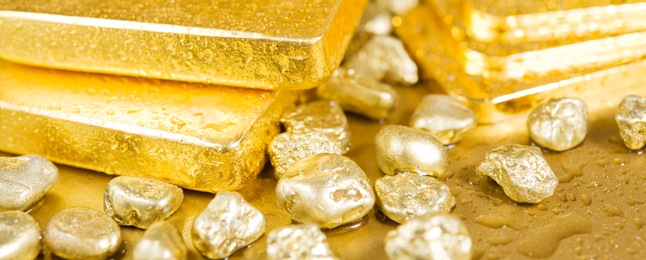Precious Metals
Gold
Beauty, scarcity and versatility have made gold one of the most desired metals in the world. Gold doesn’t tarnish and can be hammered and shaped to extreme fineness (1 gm of gold can be hammered into a 2 metres square sheet!)
Historically this metal was used as money up until the early 1900’s when gold coins were exchanged for paper notes and base metal coins.
In jewellery, gold has been used since pre Roman times. It is acid free, highly malleable and fully recyclable. Over the centuries, it has been mixed (or alloyed) with other metals to increase hardness or to change colour, but it can be readily returned to its pure state.
Gold can be alloyed into a myriad of colours from white and rose gold (the most commonly known) to black, green and purple. In most Western countries, gold can be purchased in a range of carats, from 9ct through to 18ct. Purer carat gold such as 22ct and 24ct (pure gold) is usually more available in the Eastern countries where it still plays a large role in currency exchange, as it did from the earliest of times.
Platinum
Named the "King of Metals" by Louis XVI in the 18th Century, as 'the only metal fit for royalty'. Platinum has been used since Egyptian times and is the purest of the metals, usually at least 90% pure. It is hypo-allergenic and its natural white colour will not tarnish.
In Victorian times Platinum was the metal of choice for setting, and heavily used by Tiffany, Faberge and Cartier. It wasn’t until the early 1900’s that it was surpassed by the development of white gold. This hardy metal has an extremely high melting point, and requires much patience and attention to obtain a fine finish.
Silver
Silver has been used for centuries in jewellery, and still retains its popularity due to its naturally white colour, and affordability. It was considered a sacred metal in ancient times, and was used as a form of monetary exchange for centuries. Sterling Silver is generally considered of the best quality and has a fineness of 925 parts per thousand. Silver is however a reactive metal and will be affected by skin or air acidity and tarnish (turn grey or black); this is an external oxidisation and can be removed with a soft polishing cloth – or if necessary can be professionally polished. Silver also fluctuates in value over time.
Other Metals
There is a large range of other metals available to today’s consumer - Titanium, Palladium, Steel and Nobium being the most popular. All these metals are making a greater statement in the jewellery industry nowadays, as technology has allowed working with these metals an easier task. Palladium, a natural white metal, has been used for many years to assist in alloying white gold, but today is starting to stand proud as a precious metal in its own right. Titanium is renowned for its light weight and durability and has a light grey finish. Steel and Nobium have found their way into the Industry offering unique looks particularly in Men’s jewellery.



